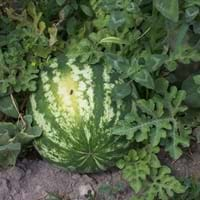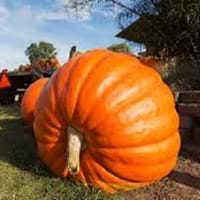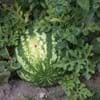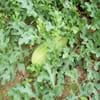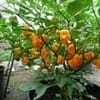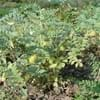Life Span
Annual and Perennial
Annual
Origin
Africa
South America
Types
Not Available
Not Available
Habitat
subtropical regions, Tropical regions
gardens, Moist Soils
USDA Hardiness Zone
10-12
Not Available
Sunset Zone
H1, H2, 1a, 1b, 2a, 2b, 3a, 3b, 4, 5, 6, 7, 8, 9, 10, 11, 12, 13, 14, 15, 16, 17, 18, 19, 20, 21, 22, 23, 24
A1, A2, A3, H1, H2, 1a, 1b, 2a, 2b, 3a, 3b, 4, 5, 6, 7, 8, 9, 10, 11, 12, 13, 14, 15, 16, 17, 18, 19, 20, 21, 22, 23, 24
Habit
Prostrate/Trailing
Vining/Climbing
Flower Color
Yellow
Yellow, Gold
Flower Color Modifier
Bicolor
Bicolor
Fruit Color
Red, Dark Green
Yellow, Orange
Leaf Color in Spring
Green, Dark Green
Green, Light Green
Leaf Color in Summer
Gray Green
Green, Dark Green
Leaf Color in Fall
Gray Green
Green, Dark Green
Leaf Color in Winter
Not Available
Not Available
Leaf Shape
lobed or unlobed
Heart-shaped
Plant Season
Summer, Fall
Summer, Fall
Sunlight
Full Sun
Full Sun
Growth Rate
Very Fast
Very Fast
The pH of Soil
Neutral
Neutral
Soil Drainage
Well drained
Well drained
Bloom Time
Indeterminate
Indeterminate
Tolerances
Drought
Drought
Where to Plant?
Ground
Ground
How to Plant?
Seedlings
Seedlings
Plant Maintenance
Medium
Medium
Watering Requirements
Average Water Needs
Keep the ground moist but not water-logged, Requires consistently moist soil, Requires regular watering, Requires watering in the growing season, Water in the early morning hours
In Summer
Lots of watering
Lots of watering
In Spring
Moderate
Moderate
In Winter
Average Water
Average Water
Soil Drainage Capacity
Well drained
Well drained
Sun Exposure
Full Sun
Full Sun
Pruning
Remove damaged leaves, Remove dead branches, Remove dead leaves
Prune after flowering
Fertilizers
All-Purpose Liquid Fertilizer
Apply 5-10-5 amounts, Nitrogen, Phosphorous, Potassium
Pests and Diseases
Grasshoppers, Worms
Red blotch
Plant Tolerance
Drought
Drought
Flower Petal Number
Single
Single
Foliage Texture
Medium
Coarse
Foliage Sheen
Matte
Matte
Attracts
Bees, Birds, Butterflies
Beetles, Bugs
Allergy
Analgesic, Anti-inflammatory, Antimicrobial, Antioxidants
Asthma, breathing problems, Itchiness, Nasal Congestion, Swelling, Swelling in the face
Aesthetic Uses
Not Available
Not Used For Aesthetic Purpose
Beauty Benefits
Not Available
Good for skin and hair, Not Available, Skin cleanser, Skin Problems
Environmental Uses
Air purification
Air purification
Medicinal Uses
Cardiac, Urinary problems
Anemia, Antibacterial, anti-cancer, cholesterol-lowering, Fertility, High blood pressure, Immunity, Liver problems, Prevention of convulsion, Regulates Blood Sugar
Part of Plant Used
Fruits, Leaves, Seeds
Fruits, Leaves, Seeds
Other Uses
Oil is used in perfume, soaps, creams, etc., Used to make juice
Used As Food, Used as Ornamental plant, Used for its medicinal properties, Used in salads
Used As Indoor Plant
No
No
Used As Outdoor Plant
Yes
Yes
Garden Design
Edible, Fruit / Fruit Tree, Herb / Vegetable, Tropical, Vine
Edible, Herb / Vegetable
Botanical Name
CITRULLUS lanatus 'Sugar Baby'
CUCURBITA maxima 'Atlantic Giant'
Common Name
Sugar Baby Watermelon, Watermelon
Atlantic Giant Pumpkin, Pumpkin
In Hindi
Sugar Baby Watermelon
कद्दू
In German
Sugar Baby Watermelon
Kürbis
In French
Sugar Baby Watermelon
Citrouille
In Spanish
Sugar Baby Watermelon
Calabaza
In Greek
Ζάχαρη μωρό Καρπούζι
Κολοκύθι
In Portuguese
Sugar Baby Watermelon
Abóbora
In Polish
Arbuz Baby cukru
Dynia
In Latin
Sugar Baby Watermelon
cucurbita
Phylum
Embryophyta
Magnoliophyta
Class
Dicotyledonae
Magnoliopsida
Order
Cucurbitales
Violales
Family
Cucurbitaceae
Cucurbitaceae
Genus
Citrullus
Cucurbita
Clade
Angiosperms, Eudicots, Rosids
Angiosperms, Eudicots, Rosids
Tribe
Benincaseae
Cucurbiteae
Subfamily
Cucurbitoideae
Cucurbitoideae
Number of Species
Not Available
Not Available
Season and Care of Sugar Baby Watermelon and Giant Pumpkin
Season and care of Sugar Baby Watermelon and Giant Pumpkin is important to know. While considering everything about Sugar Baby Watermelon and Giant Pumpkin Care, growing season is an essential factor. Sugar Baby Watermelon season is Summer and Fall and Giant Pumpkin season is Summer and Fall. The type of soil for Sugar Baby Watermelon is Loam and for Giant Pumpkin is Loam while the PH of soil for Sugar Baby Watermelon is Neutral and for Giant Pumpkin is Neutral.
Sugar Baby Watermelon and Giant Pumpkin Physical Information
Sugar Baby Watermelon and Giant Pumpkin physical information is very important for comparison. Sugar Baby Watermelon height is 15.20 cm and width 180.00 cm whereas Giant Pumpkin height is 30.00 cm and width 500.00 cm. The color specification of Sugar Baby Watermelon and Giant Pumpkin are as follows:
Sugar Baby Watermelon flower color: Yellow
Sugar Baby Watermelon leaf color: Green, Dark Green
Giant Pumpkin flower color: Yellow and Gold
- Giant Pumpkin leaf color: Green, Light Green
Care of Sugar Baby Watermelon and Giant Pumpkin
Care of Sugar Baby Watermelon and Giant Pumpkin include pruning, fertilizers, watering etc. Sugar Baby Watermelon pruning is done Remove damaged leaves, Remove dead branches and Remove dead leaves and Giant Pumpkin pruning is done Prune after flowering. In summer Sugar Baby Watermelon needs Lots of watering and in winter, it needs Average Water. Whereas, in summer Giant Pumpkin needs Lots of watering and in winter, it needs Average Water.
